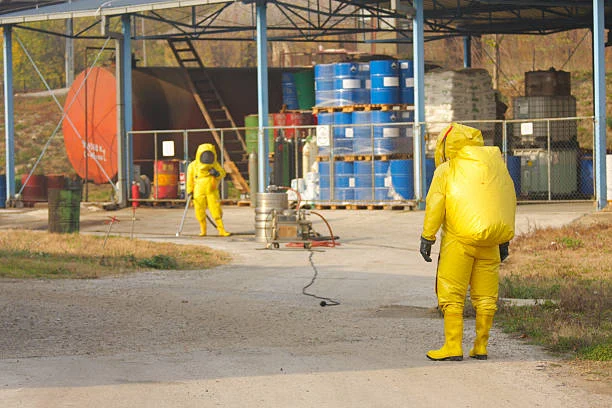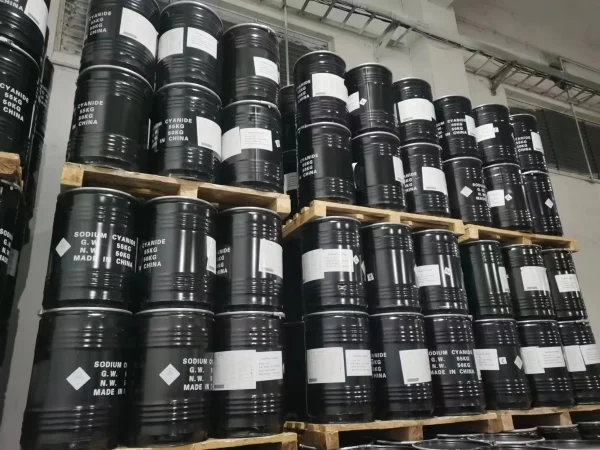
Introduction
Sodium cyanide, with the chemical formula NaCN, is a white crystalline solid. Despite its highly toxic nature, Sodium cyanide plays a pivotal and irreplaceable role in the field of Pharmaceutical synthesis. This article delves into the profound importance of Sodium Cyanide in pharmaceutical synthesis, exploring its applications, mechanisms, and contributions to the development of life - saving medications.
Chemical Properties Relevant to Pharmaceutical Applications
Sodium cyanide is a strong base - weak acid salt. It is highly soluble in water, and its aqueous solution is strongly alkaline. When it reacts with acids, even weak acids, it readily forms hydrogen cyanide. In pharmaceutical synthesis, these chemical properties enable sodium cyanide to participate in a variety of reactions. For example, its ability to provide the cyanide ion (CN⁻) is crucial. The cyanide ion can act as a nucleophile in many organic reactions, attacking electrophilic centers in organic compounds. This nucleophilic property allows for the introduction of the cyano group (-CN) into target molecules, which is a fundamental step in the synthesis of numerous Pharmaceutical intermediates.
Applications in Pharmaceutical Synthesis
Synthesis of Key Pharmaceutical Intermediates
Antibiotics: In the synthesis of certain antibiotics, sodium cyanide is used to introduce functional groups. For instance, in the production of some β - lactam antibiotics, the cyano group introduced by sodium cyanide participates in the formation of the characteristic β - lactam ring structure. The cyano group can be further transformed through a series of reactions, leading to the construction of the complex molecular framework of antibiotics, which is essential for their antibacterial activity.
Anticancer Drugs: Many anticancer drugs rely on specific molecular structures for their efficacy. Sodium cyanide is involved in the synthesis of key intermediates for these drugs. By introducing the cyano group, chemists can modify the pharmacokinetic and pharmacodynamic properties of the final drug molecule. Some anticancer drugs with cyano - containing moieties can more effectively target cancer cells, interfering with their metabolic processes, DNA replication, or cell - signaling pathways.
Cardiovascular Medications: In the synthesis of drugs for treating cardiovascular diseases, sodium cyanide - mediated reactions are often utilized. For example, in the preparation of certain calcium channel blockers, the introduction of a cyano group can affect the lipophilicity and electronic properties of the molecule. This, in turn, can influence the drug's ability to cross cell membranes, bind to specific receptors in the cardiovascular system, and regulate calcium ion channels, thereby achieving the desired therapeutic effect.
Creation of Complex Molecular Structures
Ring - forming Reactions: Sodium cyanide can be involved in ring - forming reactions, which are crucial for constructing the cyclic structures commonly found in many pharmaceutical molecules. For example, in the synthesis of heterocyclic compounds such as pyrimidines and purines, which are essential components of nucleic acids and many drugs, sodium cyanide can participate in multi - step reactions that lead to the formation of these cyclic structures. The cyano group can be incorporated into the reaction sequence, and through subsequent hydrolysis, cyclization, and other reactions, the final heterocyclic ring is formed.
Stereoselective Synthesis: In pharmaceutical synthesis, achieving stereoselectivity (the preferential formation of a particular stereoisomer) is often critical as different stereoisomers of a drug can have vastly different pharmacological activities. Sodium cyanide can be used in reactions that are carefully designed to achieve stereoselective outcomes. For example, in the synthesis of chiral drugs, certain reactions involving sodium cyanide can be carried out in the presence of chiral catalysts or under specific reaction conditions to control the stereochemistry of the product, ensuring that the desired stereoisomer of the drug is obtained.
Contribution to the Development of New Drugs
Expanding Chemical Diversity: The use of sodium cyanide in pharmaceutical synthesis allows chemists to access a wide range of chemical structures that may not be easily achievable through other means. By introducing the cyano group, new chemical scaffolds can be created, which can then be further modified and elaborated. This expansion of chemical diversity is essential for the discovery of novel drugs. Pharmaceutical companies and research institutions are constantly searching for new drug candidates, and the unique reactivity of sodium cyanide provides a powerful tool for generating molecules with potential therapeutic value.
Enhancing Drug Efficacy and Safety: The introduction of the cyano group into drug molecules can have a significant impact on their efficacy and safety profiles. For example, the cyano group can increase the lipophilicity of a drug, improving its ability to penetrate cell membranes and reach its target site within the body. At the same time, proper placement of the cyano group can also influence the drug's metabolism, reducing the likelihood of the formation of toxic metabolites. This fine - tuning of drug properties through the use of sodium cyanide in synthesis can lead to the development of drugs with improved therapeutic indices, meaning they are more effective and have fewer side effects.
Risk Management and Safety Considerations in Using Sodium Cyanide
Toxicity and Precautions: Sodium cyanide is extremely toxic. Even a small amount can be lethal if ingested, inhaled, or absorbed through the skin. In pharmaceutical manufacturing facilities where sodium cyanide is used, strict safety protocols are in place. Workers are required to wear specialized protective equipment, including respirators, gloves, and protective clothing. All operations involving sodium cyanide are carried out in well - ventilated areas, often within fume hoods, to prevent the release of toxic fumes. Additionally, there are strict regulations regarding the storage and handling of sodium cyanide to minimize the risk of accidents.
Environmental Impact and Mitigation: The use of sodium cyanide in pharmaceutical synthesis also raises environmental concerns. In case of accidental spills or improper disposal, sodium cyanide can contaminate soil and water. To address this, pharmaceutical companies implement comprehensive waste management strategies. Waste streams containing sodium cyanide are carefully treated to detoxify the cyanide before disposal. This may involve chemical oxidation processes to convert the highly toxic cyanide into less harmful substances such as cyanate or nitrogen and carbon dioxide. Additionally, environmental monitoring is carried out regularly to ensure that the impact of pharmaceutical manufacturing activities on the surrounding environment is minimized.
Conclusion
Sodium cyanide, despite its inherent toxicity, is an indispensable reagent in pharmaceutical synthesis. Its unique chemical properties enable the creation of a wide variety of pharmaceutical intermediates and the construction of complex molecular structures. It plays a vital role in the development of drugs for treating various diseases, from antibiotics for infections to anticancer drugs and medications for cardiovascular conditions. However, its use must be accompanied by strict safety and environmental management measures. As the pharmaceutical industry continues to strive for the development of more effective and safer drugs, the role of sodium cyanide in pharmaceutical synthesis is likely to remain significant, provided that proper precautions are taken to mitigate its associated risks.
- Random Content
- Hot content
- Hot review content
- Soda Ash Dense / Light 99.2% Sodium Carbonate Washing Soda
- Sodium Isobutyl Xanthate SIBX 90%
- Featured Poducts Sodium Cyanide
- Triethanolamine(TEA)
- Phosphoric Acid 85% (Food grade)
- Gold Ore Dressing Agent Safe Gold Extracting Agent Replace Sodium Cyanide
- Pharmaceutical Grade Zinc Acetate
- 1Discounted Sodium Cyanide (CAS: 143-33-9) for Mining - High Quality & Competitive Pricing
- 2China's New Regulations on Sodium Cyanide Exports and Guidance for International Buyers
- 3Sodium Cyanide 98% CAS 143-33-9 gold dressing agent Essential for Mining and Chemical Industries
- 4International Cyanide(Sodium cyanide) Management Code - Gold Mine Acceptance Standards
- 5China factory Sulfuric Acid 98%
- 6Anhydrous Oxalic acid 99.6% Industrial Grade
- 7Oxalic acid for mining 99.6%
- 1Sodium Cyanide 98% CAS 143-33-9 gold dressing agent Essential for Mining and Chemical Industries
- 2High Quality 99% Purity of Cyanuric chloride ISO 9001:2005 REACH Verified Producer
- 3Zinc chloride ZnCl2 for High Molecular Weight Polymers Initiator
- 4High Purity · Stable Performance · Higher Recovery — sodium cyanide for modern gold leaching
- 5High Quality Sodium Ferrocyanide / Sodium Hexacyanoferr
- 6Gold Ore Dressing Agent Safe Gold Extracting Agent Replace Sodium Cyanide
- 7Sodium Cyanide 98%+ CAS 143-33-9











Online message consultation
Add comment: